Respecting the Artist
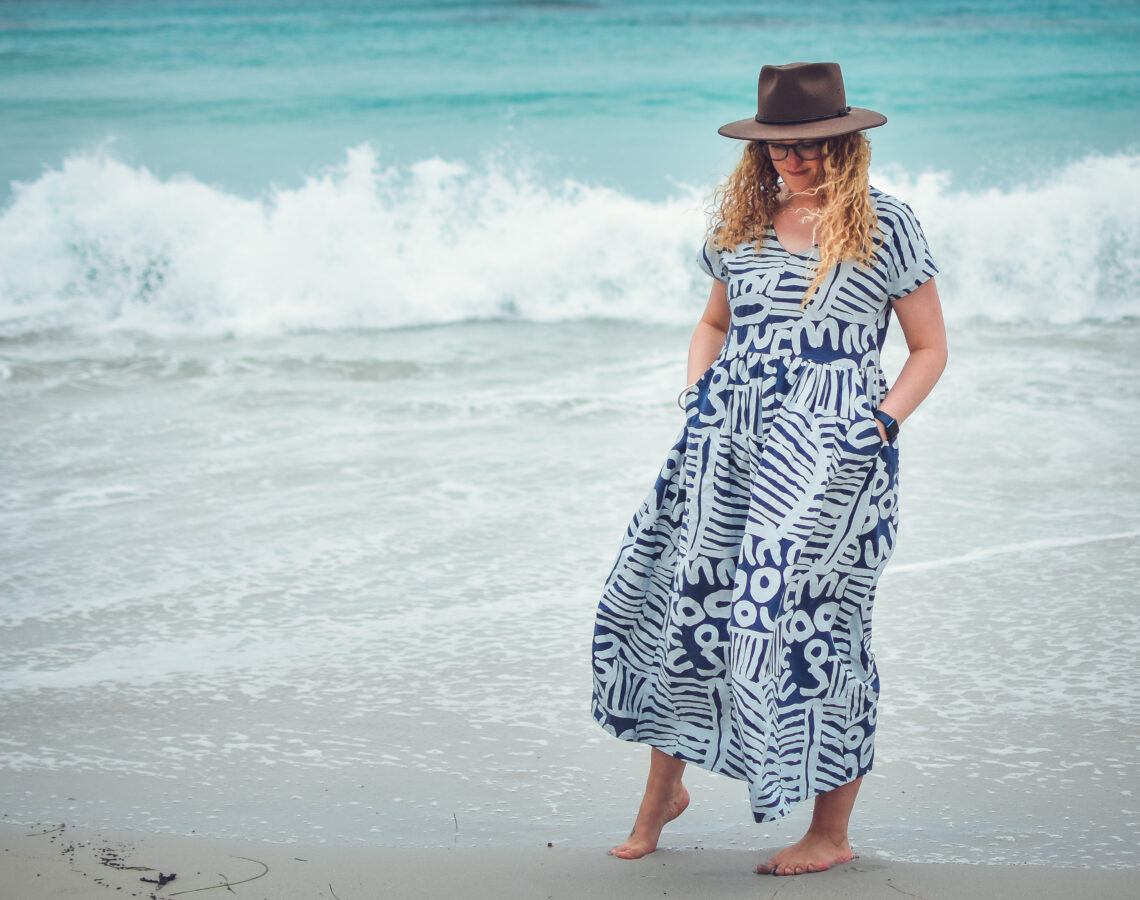
I am constantly looking for ways to make choices that are respectful and sustainable, both in my private and professional life. When it comes to buying fabric, I try to make the best choice, rather than taking the quickest or easiest option.
Here in Australia, Indigenous prints are everywhere. On the one hand, that’s great! It’s fantastic that people want to sew, wear and celebrate fabrics designed by Indigenous artists, but are the artists always fully respected?
Spotlight (a massive craft/fabric shop chain here in Australia) has a huge range of Indigenous print fabrics at, what appear to be, very reasonable prices. A little bit of online searching will bring up many other places to buy Indigenous print fabrics but for up to five times the cost – is it worth it paying so much more? Here are my thoughts.
When shopping for fabric for my Kinjarling Dress I found a lovely blue print rayon from Spotlight for $17.50/m. I also found a lovely blue print tencel-linen blend from Ikuntji Artists for $110/m.
I contacted both Spotlight and Ikuntji Artist to ask whether the artists were paid a fee that respected both their work and the amount of fabric sold. Ikuntji Artists got back to me within an hour with a very detailed answer. The artist is paid a royalty per metre. Part of the cost of each metre obviously goes to produce and print the fabric. The remaining income from fabric sales is reinvested in the art centre, which is 100% Aboriginal owned and run. Thus all funds go directly back to the artists, some in cash and others into maintaining the only Aboriginal business in their small community. The art centre is significant for all community members as it offers employment opportunities for everyone. They have 45 member artists and the board of the art centre is made up of five local Aboriginal artists. For many artists there making art at the centre is their only independent income opportunity.
Spotlight did not respond.
The fabric I bought for the cover photo dress was from Ikuntji Artists. It was significantly more expensive that the other option but I have a one-of-a-kind, hand printed piece of art. On top of that I feel confident that my money is being used to provide the artist with a respectful income as well as supporting other artists in a small community. When my fabric arrived, I also received a card with information about the artist and the story behind the print. I messaged them to check whether there was anything I needed to know about using the fabric respectfully such as whether the print had a specific direction and they were very helpful. If you’re every unsure – always ask!!
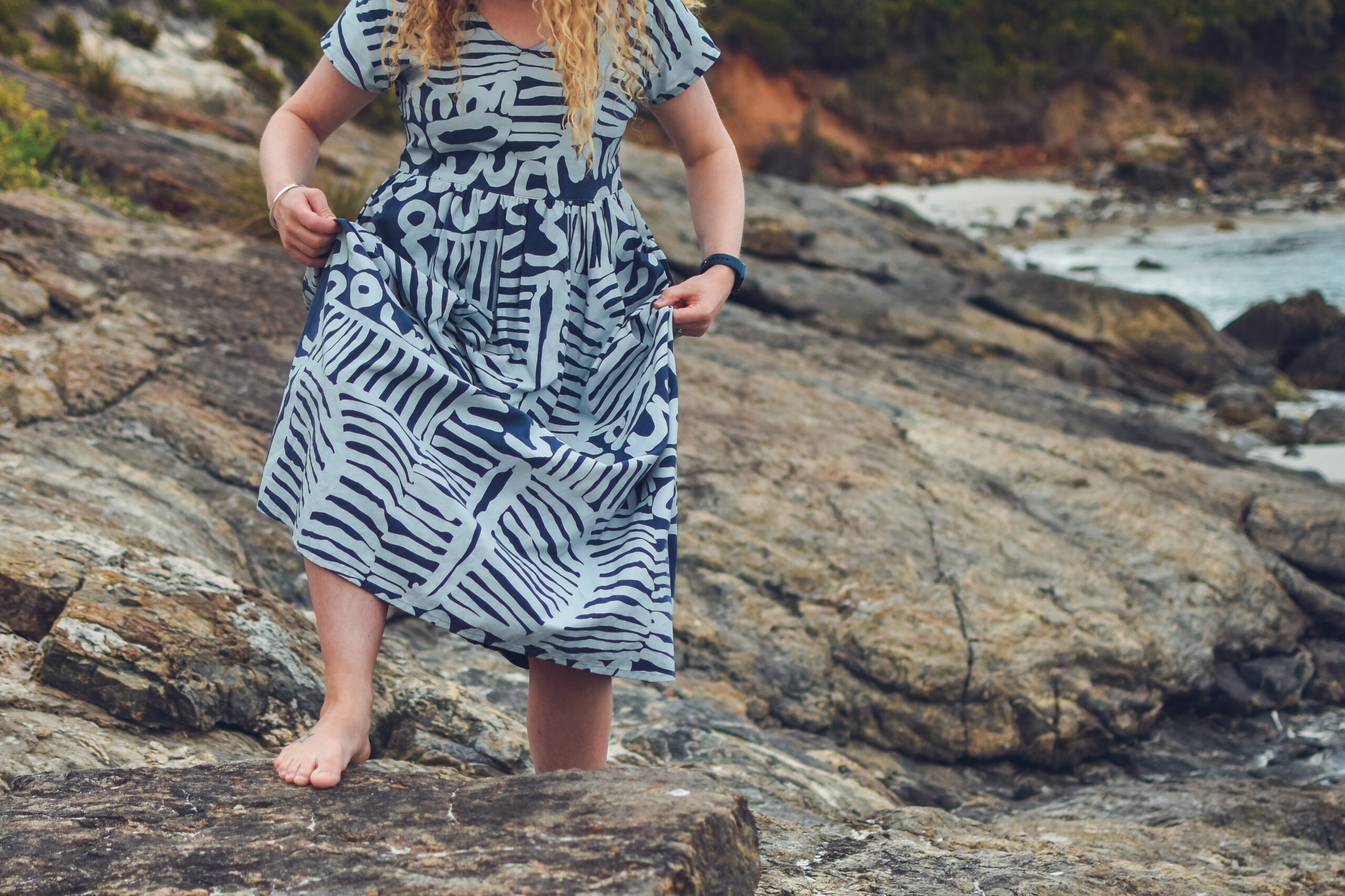
Since the cost was so much higher, I spent a long time choosing both the print and fabric base, making sure that it was exactly right for my needs. This is a good thing! Impulse buying fabric is so easy to do but rarely the most sustainable option. I was happy to wait and save whilst I made a considered choice.
I’m not saying that the artists that sell their designs to massive companies such as Spotlight aren’t paid respectfully. I don’t have that information. I would love to hear from the artists themselves and update this post.
Buying hand-printed, artist-designed fabric is expensive. The Kinjarling Dress is a fairly fabric hungry pattern. Buying multiple metres of expensive fabric often isn’t an option. But why not buy what you’re able and work with that? Use a plain fabric for your main garment and then colour block or use a print for a waist tie or a pocket. When the fabric is striking, you don’t need a lot.
This Sunset Shirt uses hand-printed fabric for just one front piece, one yoke piece and the top of the collar.
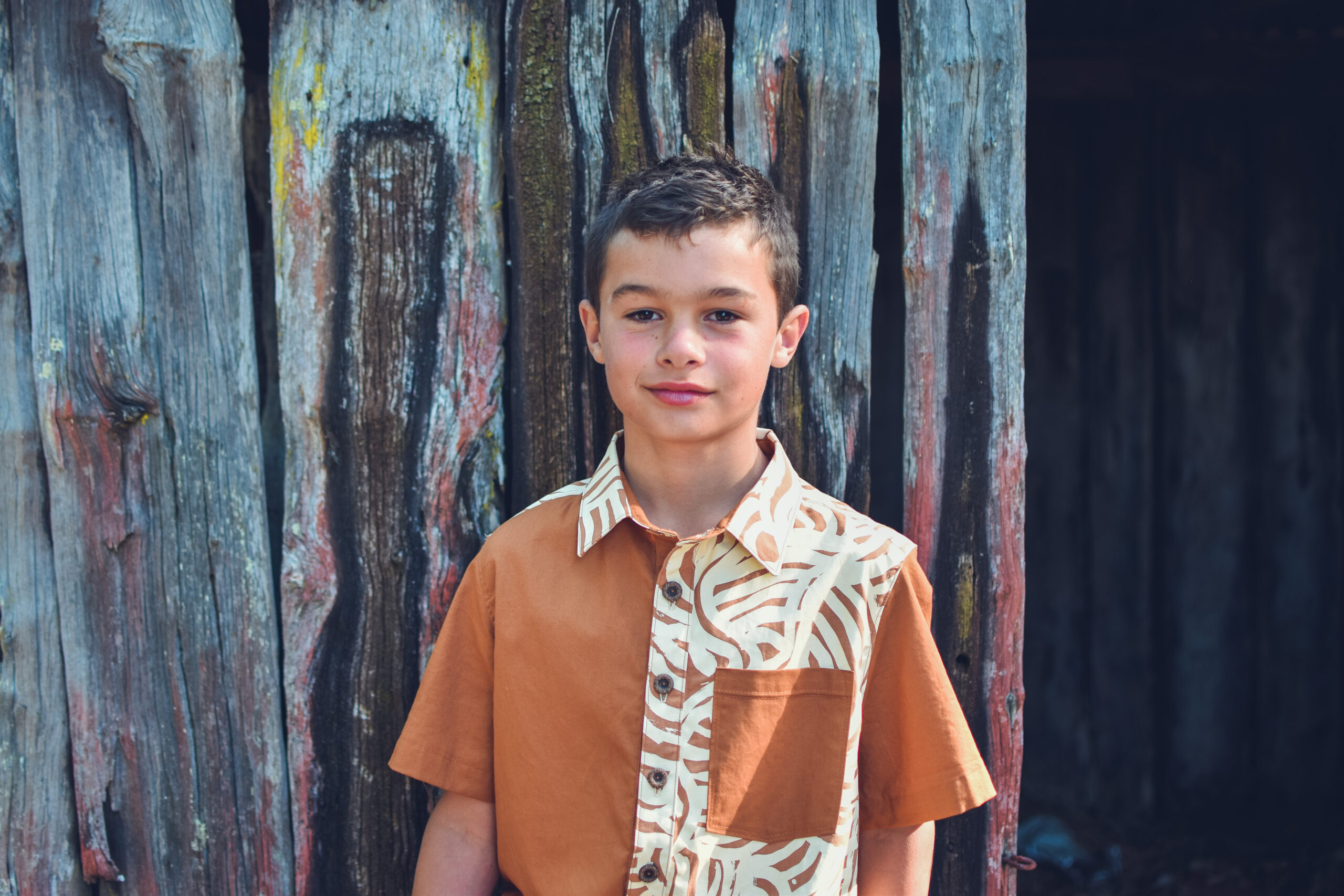
Here I used the hand-printed fabric for the pockets. A little fabric can make a big impact! Half a metre could easily be used to accent a whole family full of garments.
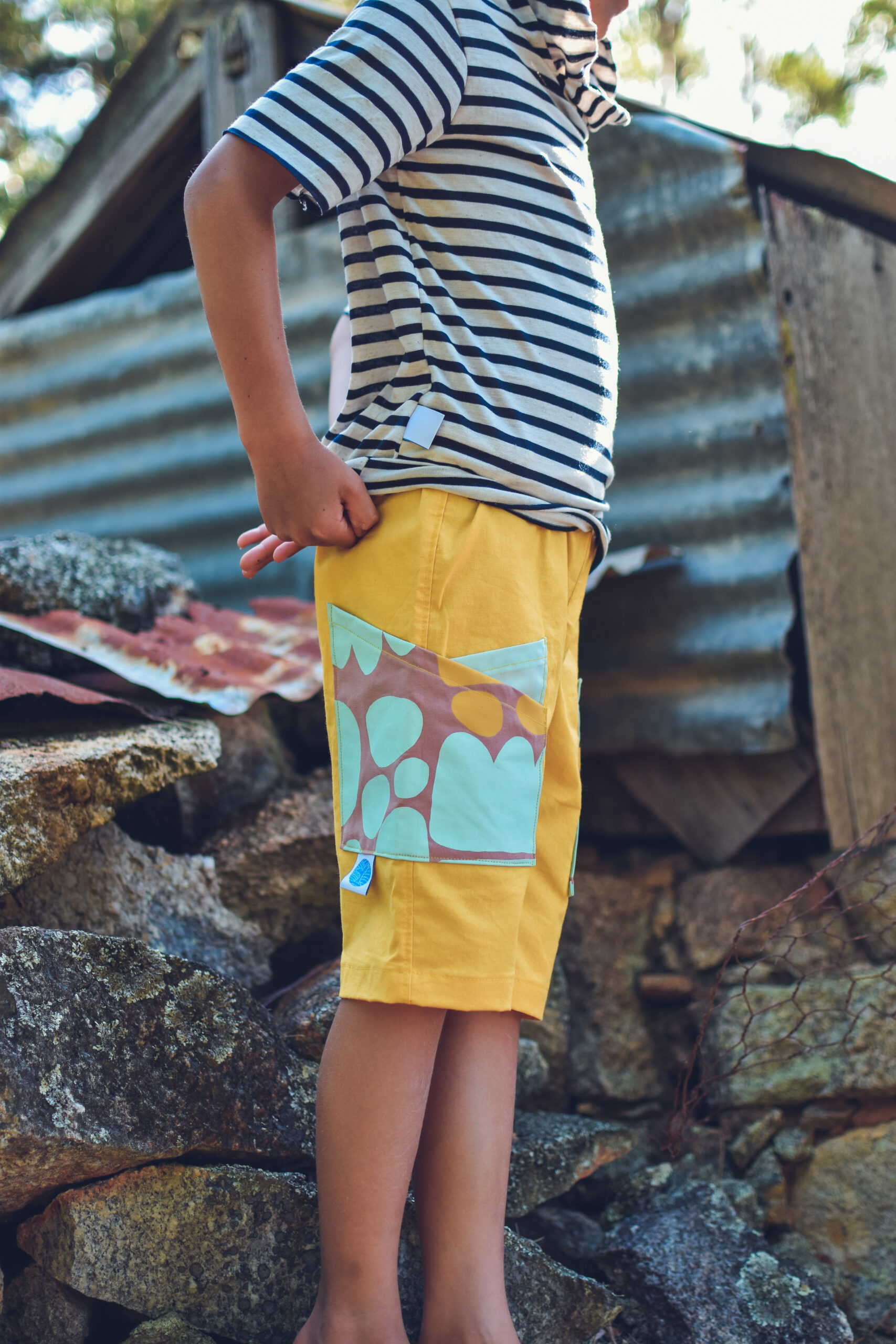
Everybody needs to do their own research and make choices that are right for them. No one should ever feel under pressure to buy something that isn’t right for them. But for me, when I have the option – buying a small amount of fabric direct from the artist or designer a will always be a better choice than bulk-buying mass-produced fabric.
___________________________________________________________________________________________
Further details about the fabric and artists:
Blue/Grey print used for my Kinjarling Dress Artist: Mavis Marks, Print: Women’s Business
Brown/Cream print used for the Sunset Shirt Artist: Leonie Napaltjarri Kamutu, Print: Pap Tjukurrp (Dog Dreaming)
Blush/Blue/Yellow print used on pocket Artist: Keturah Nangala Zimran, Print: Puli Puli (Rocks)
All three were produced by Ikuntji Artists.
I will share photos at another time but I have also had great experiences buying cotton/Lycra jersey from Papulankutja Artists through Songlines and woven fabrics from Babbarra Women’s Centre.
All fabrics mentioned in this blog post were purchased full price. I have not been asked to review or promote any fabric company or artist. All opinions in this blog post are my own and are freely given.
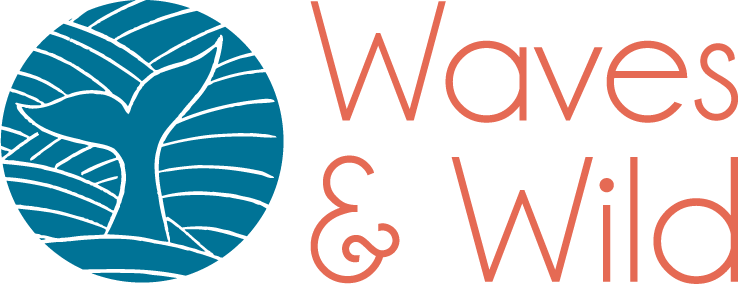
It would really be more informative if Spotlight presented a statement to quell all doubts and even misinformation.
I would love that! I asked but got no response at all.